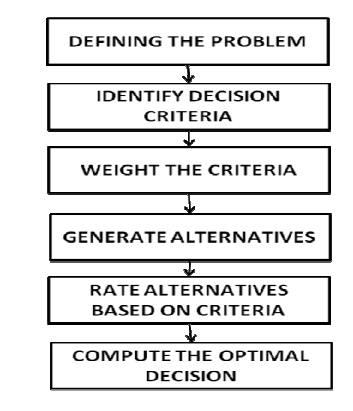Chapter: Principles of Management : Planning
Rational Decision Making Process
RATIONAL DECISION MAKING MODEL
The
Rational Decision Making Model is a model which emerges from Organizational
Behavior. The process is one that is logical and follows the orderly path from
problem identification through solution. It provides a structured and sequenced
approach to decision making. Using such an approach can help to ensure
discipline and consistency is built into your decision making process.
The Six-Step Rational Decision-Making Model
Define the
problem.
Identify
decision criteria
Weight the
criteria
Generate
alternatives
Rate each
alternative on each criterion
Compute
the optimal decision

1) Defining the problem
This is
the initial step of the rational decision making process. First the problem is
identied and then defined to get a clear view of the situation.
2) Identify decision criteria
Once a
decision maker has defined the problem, he or she needs to identify the
decision criteria that will be important in solving the problem. In this step,
the decision maker is determining what’s relevant in making the decision.
This step
brings the decision maker’s interests, values, and personal preferences into
the process.
Identifying
criteria is important because what one person thinks is relevant, another may
not. Also keep in mind that any factors not identified in this step are
considered as irrelevant to the decision maker.
3) Weight the criteria
The
decision-maker weights the previously identified criteria in order to give them
correct priority
in the
decision.
4) Generate alternatives
The
decision maker generates possible alternatives that could succeed in resolving
the problem. No attempt is made in this step to appraise these alternatives,
only to list them.
5) Rate each alternative on each criterion
The
decision maker must critically analyze and evaluate each one. The strengths and
weakness of each alternative become evident as they compared with the criteria
and weights established in second and third steps.
6) Compute the optimal decision
Evaluating each alternative against the weighted criteria and selecting
the alternative with the highest total score.
Related Topics